
In predominantly Christian countries like the U.S., Christmas has become a cultural holiday that even non-Christians celebrate to some extent. Most of us enjoy, at least, taking advantage of days off, eating lots of cakes and pies, and spending time with family and friends.
The Times of India thinks Christmas can do even more than give us a day off work… like heal the wounds caused by police brutality in Ludhiana against Sikh protesters of Ashutosh and the Divya Jyoti Jagriti Sansthan. Of course, TOI also mischaracterizes the conflict at issue as one between migrants who now feel left out of Ludhiana’s social fabric and Sikhs.
Christian organizations are planning to celebrate the festival by reaching out to the migrants, who have been feeling left out after the riots they were involved in and to Sikh protesters, who got hurt in police action.
“Christmas celebrations have the twin themes of peace and prosperity. We will be going to the areas like Dhandari, which have many migrants staying there and witnessed a lot of clashes during the riots,” said Albert Dua, president of Christian United Federation. [TOI]
TOI journalists may not have much of a grip on reality, and are probably overestimating what one holiday and a few days off can do. Still, I do hope you enjoy the holidays, however you spend them. Happy holidays!
On a remotely related note, if Santa were Punjabi….

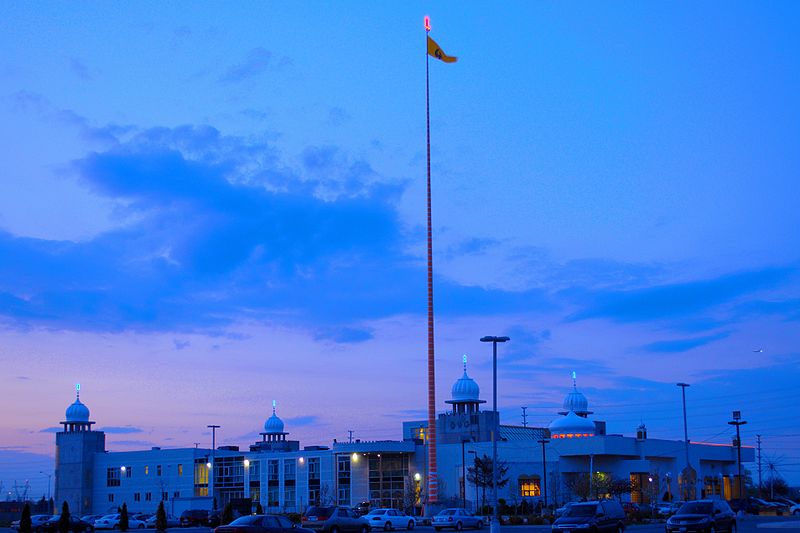 We often lament the state of our gurdwaras but we should just as often stop and think about how much we have accomplished.
We often lament the state of our gurdwaras but we should just as often stop and think about how much we have accomplished.
Tonight I had a chance to visit the famous Ontario Khalsa Darbar (aka Dixie) Gurdwara in Mississauga/Brampton, Ontario. On a frigid Friday night in December, the place was packed with sangat and programs.
In one hall, a Hindu Panjabi family was having a bhog for a deceased elder. On the other side agurmat sangeet teacher was having a kirtan for her daughter with beautiful kirtan being sung in raag by her many young students. In the adjoining halls, the United Sikhs organization was having their 2nd Annual Global Sikh Civil Rights Conference with tonight’s opening session focusing exclusively women’s issues. Upstairs, Harmeet Singh was holding his usual Friday session with hundreds of youth and their families. And to top this off Bhai (no longer Sant) Niranjan Singh Jawadi Kalan was performing kirtan to a packed hall in the main hall. Almost every program was in English or being translated into English on the screens.
So while we can (and should) continue to critically analyze the hardware (physical structures) and software (programs/initiatives) of our Sikh institutions, we need to simultaneously recognize when progress is being made.
Growing up I would have killed to have been a part of each of those individual programs happening at Dixie Gurdwara tonight (well maybe not the bhog) and today all of those functions were happening on the same day under the same roof.
On many days, it seems like we’re moving two steps back, but tonight I saw at least one step forward.
12/19/09
Guest blogged by sikhpulse
Before a beaded string of musical melodies lies a riddle. This riddle, composed by Guru Arjan Dev Ji, provides much clarity and purpose when revealed.
Mundavani, one of the final hymns of the Guru Granth Sahib, is sometimes translated as “riddle.” It precedes Raagmala, “the beaded string of musical melodies.” Mundavani is also described as Guru Ji’s “closing seal” of the Guru Granth Sahib as this composition served to authenticate and preclude any apocryphal additions to the bani. Like most of you, I have been in touch with these six lines since I was a wee little Sikh. And yet for years I only listened. It was only recently that the riddle of light shined within my mind, heart and spirit.
![]()
Mundavani, Fifth Mehl:
![]()
Upon this Plate, three things have been placed: Truth, Contentment and Contemplation.
![]()
The Ambrosial Nectar of the Naam, the Name of our Lord and Master, has been placed upon it as well; it is the Support of all.
![]()
One who eats it and enjoys it shall be saved.
![]()
This thing can never be forsaken; keep this always and forever in your mind.
![]()
The dark world-ocean is crossed over, by grasping the Feet of the Lord; O Nanak, it is all the extension of God. ||1||
By neglecting art, we’ve been neglecting our spirituality. And perhaps vice versa. Perhaps we could practice receiving a little more, instead of doing, as we normally do.
Most of us, especially in Asian communities that so highly value scientific endeavor, and want the next generation to all be doctors, grossly undervalue art. Sadly, this might be stunting our spirituality.
How often have your teachers, parents, and other adults in your life impressed upon you the importance of active effort, purposeful thought, and discipline? The scientific methods we rely upon to explain our environments and the universe all rely on these traits and oh-so-important- rationality. Through decades of education, we’re pounded into submission, learning to accept that rationality is good, and irrationality, bad.
But that’s not entirely true. And in the last week, I noticed that both Japji Sahib and a popular American site (especially amongst techies) bypassed rationality to focus on the importance of a different kind of knowledge – intuition. And it rang true. Intuitively. Irrationally.
From the 13th Pauri of Japji Sahib:
On many occasions, I have noted my dismay at the joke of journalism that calls itself the Times of India. They never cease to provide stupid nonsensical and ill-researched articles. Here is one more example.
It appears that the writer ‘Divya A’ has recently been making his/her rounds at various Sikh film screenings and festivals. Instead of lauding a young community on its tenacity to promote arts and encourage creativity in the community, the author can only wonder:
But how healthy is it for a community to focus on a painful past and present itself to the world as a suffering and wronged people?[link]
Who is the author to decide what is right or wrong for the community?
The author continues to push a nonsensical ‘Khalistani’ conspiracy theory as the raison d’etre behind the shift to visual arts. Instead of looking at the broader context of the proliferation of youtube with film and television being the visual media of the masses, the author believes there is something far more sinister.
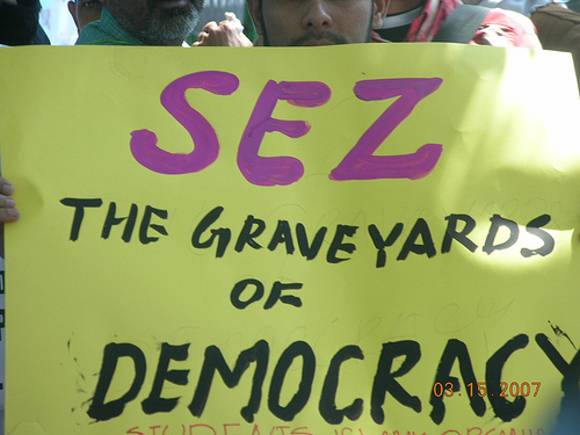 Earlier this month TLH discussed how the unseasonably dry summer in Punjab is threatening its agriculture and economy. This week, the Punjab Assembly adopted a resolution authorizing the development of additional Special Economic Zones, or SEZs, while streamlining and supporting the existence of pre-existing SEZs.
Earlier this month TLH discussed how the unseasonably dry summer in Punjab is threatening its agriculture and economy. This week, the Punjab Assembly adopted a resolution authorizing the development of additional Special Economic Zones, or SEZs, while streamlining and supporting the existence of pre-existing SEZs.
SEZs are not entirely new to Punjab. In 2006, Punjab cleared thirteen (13) SEZs for development and approval, and the proposal was approved by the Indian central government in 2007. The current number of “greenlit” SEZs in Punjab currently totals 12, but the number could increase extensively.
The Sikh Gurus never believed in the exclusivity of their teachings. The Gurus undertook travels to spread their message to peoples of different cultures in their own native languages. The Gurus did not believe in the ideas of any language being ‘sacred’ or ‘special’. [link]
I found the above quote to be quite interesting given a recent conversation I’d had with a close friend of mine. She felt that the Guru Granth Sahib was not accessible to most Sikhs and this inaccessibility was actually detrimental to those Sikhs who wanted to understand the teachings of the Gurus. She recently found herself, on several occasions, wanting to refer to the Guru Granth Sahib in order to obtain some enlightenment on things occurring in her life. There were several obstacles she felt that prevented her from doing so. First, she doesn’t read Gurmukhi (although she is learning) and second, having a sound understanding of Gurmukhi doesn’t necessarily translate to comprehension. While I agree that it is important for each of us to learn Gurmukhi, to help deepen our understanding of Gurbani, I wonder how many Sikhs of our generation are able to truly do so.
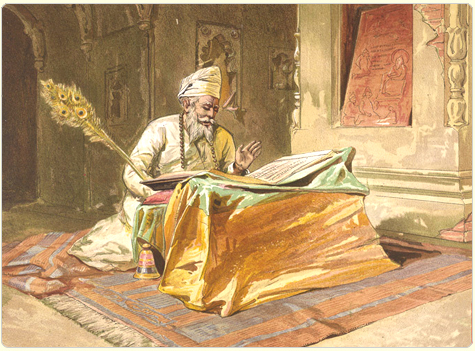 The Christian faith, for example, focuses heavily on bible study and encourages youth to participate in these groups at a young age. In our Gurdwaras, we place a large emphasis on learning Punjabi – an important element in having the tools to access our scriptures. However, we hardly pay any attention to teaching youth how to read and understand Gurbani. The Guru Granth Sahib is the only religious scripture in the world which contains ideas and thoughts of great saints from non-Sikh backgrounds. Without a doubt, it is unique in all sense of the word. If the Guru Granth Sahib is the most important source of wisdom for Sikhs – then why can’t the majority of Sikhs understand it?
The Christian faith, for example, focuses heavily on bible study and encourages youth to participate in these groups at a young age. In our Gurdwaras, we place a large emphasis on learning Punjabi – an important element in having the tools to access our scriptures. However, we hardly pay any attention to teaching youth how to read and understand Gurbani. The Guru Granth Sahib is the only religious scripture in the world which contains ideas and thoughts of great saints from non-Sikh backgrounds. Without a doubt, it is unique in all sense of the word. If the Guru Granth Sahib is the most important source of wisdom for Sikhs – then why can’t the majority of Sikhs understand it?
 Earlier this week in B.C., hundreds of Sikhs protested the arrival of Mann Singh Pehowa, a granthi accused of rape, misconduct, and blasphemy.
Earlier this week in B.C., hundreds of Sikhs protested the arrival of Mann Singh Pehowa, a granthi accused of rape, misconduct, and blasphemy.
There is, of course, an underlying issue here regarding whether or not Pehowa supports his own dera, has encouraged blasphemy, etc. There is pretty widespread criticism of him, as an individual, as well as of his behavior. I do not want to use this opportunity to get into the nitty gritty of deras and blasphemy, but rather, to focus on the issue of religion and exploitation.
Earlier in the year, Sundari discussed sexual assault in the context of a larger community-level failure to ensure gender equity. Sexual abuse is not new to faith communities, but it evokes jarring feelings of betrayal, condemnation, and deep psychological trauma, both among those who are abused and among their loved ones.
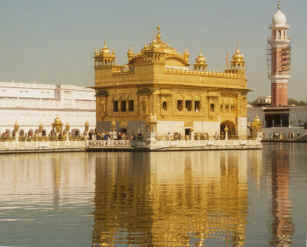 For some Sikhs in Punjab, apparently two Harmandar Sahibs. Or at least that’s the argument between the SGPC and a group of Sikhs. The SGPC argues that a group of Sikhs are building a replica of Harmandar Sahib, and that they stridently oppose any “imitation” gurdwaras (my phrase, not theirs).
For some Sikhs in Punjab, apparently two Harmandar Sahibs. Or at least that’s the argument between the SGPC and a group of Sikhs. The SGPC argues that a group of Sikhs are building a replica of Harmandar Sahib, and that they stridently oppose any “imitation” gurdwaras (my phrase, not theirs).
The Sikhs, who are definitely building a gurdwara (but whether or not it is intended to be a replica is contested), argue that the SGPC is trying to stir up trouble and adopting wedge politics tactics to scramble for power.
At first I read this story and thought to myself, “Wow, that is wacky.” But the longer I’ve reflected on it, the more I have to ask — REALLY???
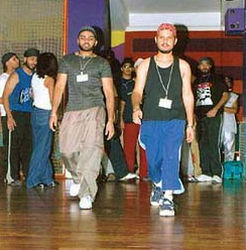 Sometimes (or may be it more often), you read an article that just doesn’t seem to make any sense. My google newsfeeder caught on such article titled: Sikh youth moving away from teachings of Sikhism. The author of the article Harleen Kaur seems to be at all places at once, reporting stories on Chandigarh, Malaysia, Leicester, and New York all on the same day. It does raise eyebrows into the type of reportage it can claim.
Sometimes (or may be it more often), you read an article that just doesn’t seem to make any sense. My google newsfeeder caught on such article titled: Sikh youth moving away from teachings of Sikhism. The author of the article Harleen Kaur seems to be at all places at once, reporting stories on Chandigarh, Malaysia, Leicester, and New York all on the same day. It does raise eyebrows into the type of reportage it can claim.
The story reports:
The young Sikhs seem to be moving away from the teachings of Sikhism largely due to lack of knowledge and faith in their culture and religion.
Hardly anything surprising there. Sikhs have been saying that for years.
The article is trying to promote the Sikh Naujawan Sabha’s Vaisakhi-fest, but some of the analysis seems off, even bordering on the absurd:
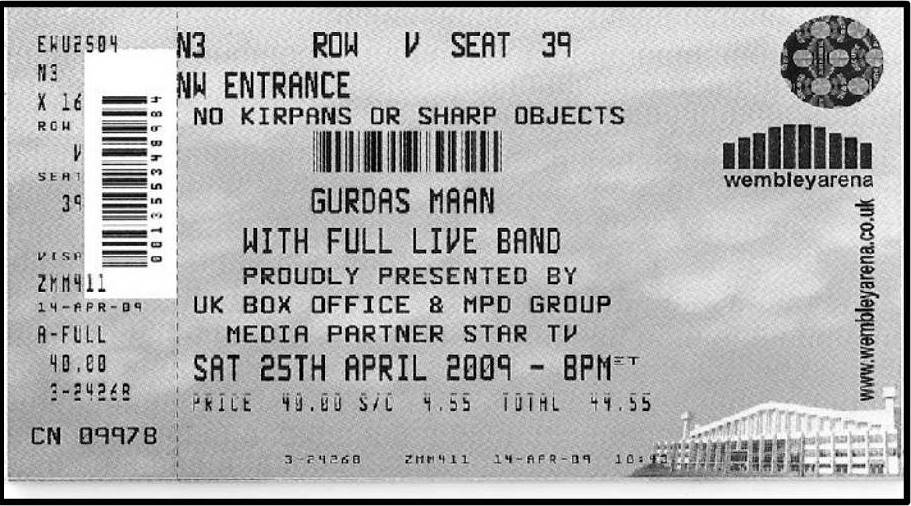
Vaisakhi in the diaspora usually brings two things to those living in cities with large Sikh communities: Nagar Kirtans and Vaisakhi concerts. Unfortunately, if you were an Amritdhari Sikh in London this year and you wanted to partake in both, you would have been out of luck. Tickets for the recent Gurdas Maan concert held at Wembley Arena had a unique warning printed on them, “NO KIRPANS OR SHARP OBJECTS”.
I won’t dwell too much on the irony of banning kirpans at a Vaisakhi concert, which usually start with the requisite dharmak songs, like Gurdas Maan’s tribute to Guru Gobind Singh and his contributions to Sikhi.
What I wonder is exactly what the organizers must have been thinking in doing this. I suspect the banning of kirpans probably falls under generic security rules banning knives and other weapons. In fact the terms and conditions on their website state that the “possession of any article, which is or may be used as a weapon or missile” is strictly prohibited. Pretty standard fare at all large venues.
One of the underlying issues to many of the discussions we have here on TLH seems to focus upon whether or not elements of Sikhi are being redefined as we evolve in the communities within which we reside. We often take concepts such as Seva, Sangat and Simran for granted without wondering if they are being fulfilled in their true element. I post on this topic not to argue whether or not what we do is right or wrong – but rather in what forms we see these concepts exist today.
In the midst of this world, do seva, and you shall be given a place of honor in the Court of the Lord. SGGS p26
One example that comes to mind is how gurdwaras and the sangat (I include myself in this sangat) have essentially ‘outsourced’ the kitchen seva. Each time I have visited one of the gurdwaras in my area, I notice that the sangat departs after eating langar, leaving behind a kitchen full of dirty pots and pans. This does not seem to be an issue because many gurdwaras have now hired help to come in and essentially do the seva. I understand the gurdwara’s reason for hiring help (the dishes have to get done) but I wonder how we got to this point. I’m not sure if this is an issue unique to North America or whether it occurs in India and also in the UK, for example. During my last few visits to gurdwaras in India, I was so impressed by the amount of seva that was occuring in the kitchen and was also inspired by the energy that was produced from the sangat working selflessly towards a similar goal.
Harpal Singh Kapoor, Director of Miami-Dade Transit, must be the coolest bureacrat in all of Florida. At a recent office party he not only showed off some mad bhangra skills, he taught his non-Punjabi colleagues some skills too, to the beat of a live dhol.

I know there are some purists in the audience who think that bhangra might not be a good way to promote relations with Sikhs because it’s Punjabi culture, not Sikh, etc. … but I disagree.
Music and dance are a universal language. Kapoor probably already knows his office staff, and so he’s not a stranger to them, but unless they do bhangra in the office, they probably don’t get a chance to connect across the conference table like you can in response to the beat of a dhol. Connecting on that most basic human level, in response to music, reminds people that underneath our exteriors we’re all the same. And if they DO do bhangra in the office, then I’m moving to Florida to join their staff.
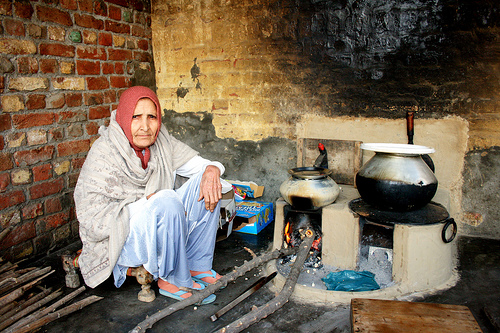
While driving home from a friend’s house one night I noticed something out of the corner of my eye as I passed the rows of darkened homes in his neighborhood. One garage door on the block was open and the garage lights were on, but there were no cars inside. Instead, there was an older Mata/Mai/Bibi/Bebe standing in front of a stove making roti, while a younger lady was dishing out what must have been some dal/sabzi.
The site was kinda cool and I had to resist the urge to stop my car and take a picture to post here – for fear of looking like a creepy weirdo. I did, however, think about it all the way home. What made it worth thinking about for a 10-minute drive is simple: it took me back to Punjab, where many farming families have two kitchens – one inside and one outside (where a bulk of the cooking is done).
As I was randomly going through youtube clips a few days ago, I came across the above video of a group of Sikh children in Fremont, who learn kirtan in classical raags. Despite the poor audio, its obvious that they are good and I know this also from having heard them (and some of their contemporaries) in person – they are GOOD.
A couple of weeks ago Jodha reported on an article that brought to light the fact that Sikh children are practicing the tradition of kirtan, but what I think we didn’t discuss there is how this generation of Sikh musicians has really become one of classical musicians, learning stringed instruments of old and performing keertan in the Classical or raag framework. The growth has been obvious, especially in recent years – with the rise of institutions such as the The Raj Academy in Great Britain and the Gurmat Sangeet Department at Punjabi University Patiala, which specialize in providing instruction in traditional (classical) kirtan, and even the Miri Piri Academy in Amritsar of which the Chardi Kala Jatha (classically trained professional Sikh musicians who happen to be American in nationality) is a product.
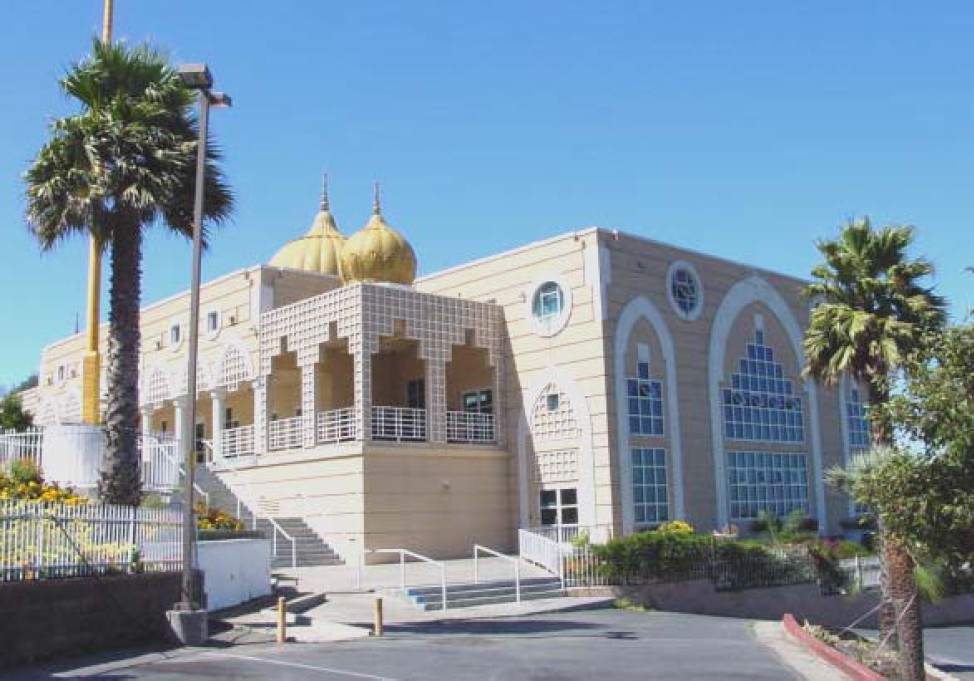 We covered the El Sobrante Gurdwara expansion — and the subsequent PR fallout — a while ago. Earlier this week, the county halted expansion plans pending a further environmental review. Local residents filed a petition for re-review, claiming the “regional service area” proposed in the expansion documents underestimated projected population growth/use in the area:
We covered the El Sobrante Gurdwara expansion — and the subsequent PR fallout — a while ago. Earlier this week, the county halted expansion plans pending a further environmental review. Local residents filed a petition for re-review, claiming the “regional service area” proposed in the expansion documents underestimated projected population growth/use in the area:
The appellants, El Sobrante Valley Planning and Zoning Advisory Committee and Quail Hill Homeowners Association, say the mitigated negative declaration does not adequately address their concerns regarding traffic, parking, noise, possible landslides, drainage, wildlife and emergency vehicle access.
Gurdwara leadership says that community members have it all wrong, though, and that they are off the mark in understanding how regional is defined and what it means for the future of the center.
Sikh leaders said they have spent the past 10 years fine-tuning the project to satisfy the county as well as neighbors.
“We have spent more than half a million dollars” — not including volunteer time and effort — “to comply “… and keep our neighbors advised…”
When we discussed this last time, I asked about the challenges we face explaining our presence and integrating into the fabric of religion in the U.S. We could revisit that conversation, but this time I thought it was curious that the project has been stalled in the face of a staggering economic slowdown in this region. Could this have generated jobs and funding at a time when the area could benefit from economic development? Or was this not worth the end result?
As we approach the calendar year 2008, it also marks a year of our existence.
Looking at our top 10 posts in terms of the number of hits, I guess it is sort of a mixed bag on how The Langar Hall is finding its voice. Our top hit getters were usually part of the “first comers” rule. Our bloggers were the first to put up the Kenneth Cole Sikh Ad and our comment board became a one of the first internet hubs for fans to mourn the loss of Ishmeet Singh.
Still our breakthroughs, in my opinion, were our original commentary that sparked various discussions – whether it was about Sikhs and the Media in “Will the Revolution be Televised?”, the issues of drug distribution in our community in the still popular Balbir Dhami article, looking at the role and effects of Punjabi Sikhs in the ensuing mortgage crisis, or even in creating our desi list in “Sikh Medicine.”
For the full list, see below the fold:
 Are how I usually spend December 25th (unless, like this year, Gurpurab services fall on the same day). When I was younger, my family and I would spend the week of Christmas collecting items for donation, volunteering with the local soup kitchen, and generally reflecting on, and brainstorming, how we could help others during a sometimes lean time of year. I like to think this tradition has morphed as I’ve grown older (into a year-long commitment to service), but something about December always makes me feel more thoughtful.
Are how I usually spend December 25th (unless, like this year, Gurpurab services fall on the same day). When I was younger, my family and I would spend the week of Christmas collecting items for donation, volunteering with the local soup kitchen, and generally reflecting on, and brainstorming, how we could help others during a sometimes lean time of year. I like to think this tradition has morphed as I’ve grown older (into a year-long commitment to service), but something about December always makes me feel more thoughtful.
My parents also went out of their way to explain that as Sikhs we did not celebrate Christmas, but they explained the significance of the Sikh religious holidays that tend to fall around this time of year. I didn’t feel like I had to trade — presents were not really an expectation or feature of the season after I passed the age of 7. Instead we spent loooooong hours at the gurdwara for services.
 The phone rings and its the call you dread as an uncle or older cousin. A desperate parent is on the other end asking for your help. Your teenage nephew/cousin wants to cut his hair. Can you please talk some sense into him.
The phone rings and its the call you dread as an uncle or older cousin. A desperate parent is on the other end asking for your help. Your teenage nephew/cousin wants to cut his hair. Can you please talk some sense into him.
This happened to me last week with my cousin and, I have to admit, I was woefully unprepared. While I’ve given lots of talks on Sikhi at Sikh camps and to non-Sikh audiences, I’ve never had to actually have this kind of discussion. One where I may be the determining factor in an individual’s major life decision.But what could I offer that he hadn’t already heard? How could I change the mind of a guy that’s already decided? He’s grown up in a Sikh family, his entire family keeps their hair. He has lots of Sikh friends and lives in a Sikh part of town. He should have picked up Sikhi through osmosis, but he hasn’t.
His parents have tried their best but working multiple jobs and struggling financially, putting food on the table has been their priority. And like many Punjabi Sikh parents, they’ve assumed that being surrounded by Sikh culture would be enough. So they’re shocked, betrayed, angered, hurt and deeply saddened when they’re son finally musters up enough courage to talk to them.
It’s a traditional part of going to gurdwara — giving a dollar (or some other amount of money) as an offering before bowing down in front the Guru Granth Sahib.  Some may not think about this much, aside from how much they would like to offer and what they would like to think about before the Granth. For me, this practice is a bit more complicated. For years now, when I go to gurdwara, I consider not only the amount to offer, but the condition and source of the paper bill itself. Allow me explain:
Some may not think about this much, aside from how much they would like to offer and what they would like to think about before the Granth. For me, this practice is a bit more complicated. For years now, when I go to gurdwara, I consider not only the amount to offer, but the condition and source of the paper bill itself. Allow me explain:
When I go to, say a fast food “restaurant” or other business where cash is exchanged, I will look into my wallet and will feel a bit “bad” if the dollar bill I am handing over to vendor is crumpled, torn, held together by tape, or has excessive writing on it. For example, there is a $10 bill in my wallet now that has been there for weeks — I have been hesitant to subject a business to its possession. Some may view such reluctance as unnecessary.
But the situation changes dramatically, in my opinion, when we are talking about providing money to a gurdwara, as part of bowing down and expressing love and respect to our living Guru.

